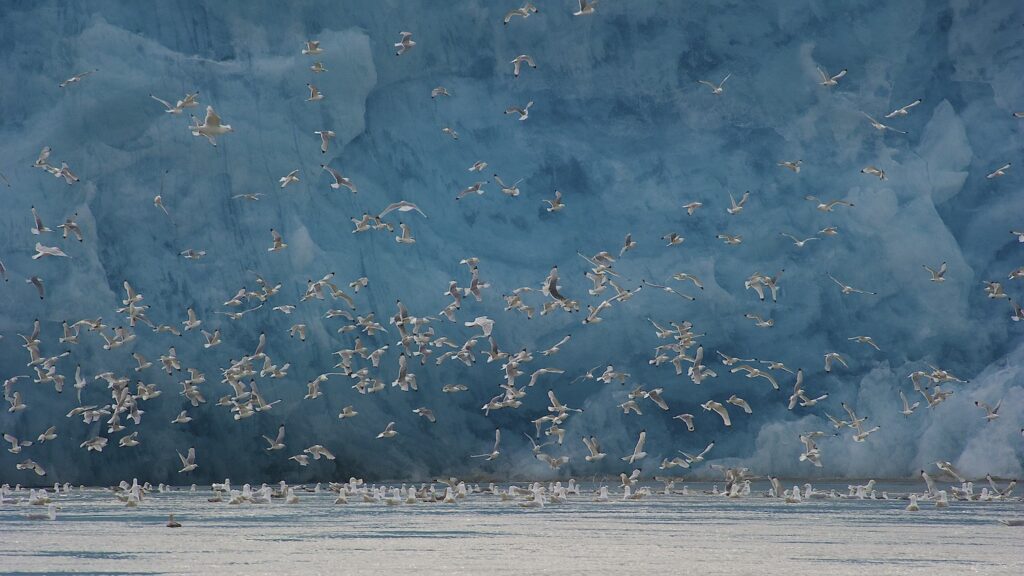Loss of sea ice affects Arctic seabirds
The ongoing decline in Arctic sea ice is expected to have effects on Arctic seabird populations, but little evidence for this exists. Using long-term data series on sea ice and population sizes of black-legged kittiwakes (Rissa tridactyla) and Brünnich’s guillemots (Uria lomvia) on western Spitsbergen, researchers have searched for such a relationship and the mechanisms that might lie behind it.
Sea ice and seabird populations in decline
The Arctic is warming rapidly and the sea ice is disappearing. This is expected to have profound effects on Arctic wildlife, but there is still a lack of empirical evidence that a decline in Arctic animal populations is connected to loss of sea ice. Using long-term data series (1988-2018) from two fjords on western Spitsbergen, Svalbard, researchers have tested whether or not changes in sea ice abundance were associated with changes in population sizes for two of the most common Arctic seabird species – Brünnich’s guillemot and black-legged kittiwake. The maximum sea ice concentration on western Spitsbergen decreased significantly during the study period. The researchers also found that the sizes of kittiwake and Brünnich’s guillemot colonies on Svalbard have declined since the mid‑90s, even though the shapes of the trajectories were not linear and the numbers of kittiwakes have stabilized or even increased in recent years.
The effect is delayed through the food chain
Even though the change in sea ice cover could only explain a small proportion of the total change in colony size, the association between sea ice concentration and colony size was clear. Modelling also revealed a two-year lag in the relationship. A likely explanation for this delay is that a change in sea ice concentration has repercussions along the food chain, with poor sea ice conditions in a given year resulting in a lower recruitment of polar cod (Boreogadus saida). Two years after the poor ice conditions, the abundance of two-year old polar cod – a key prey for kittiwakes and Brünnich’s guillemots – will be low when the birds return to the breeding sites. As a result, fewer pairs will initiate breeding and fewer birds will be present in the colony.
Variation between species
For Brünnich’s guillemots, the association between sea ice and colony size was the same in both fjords. For black-legged kittiwakes, the relationship was not as clear in the fjord with productive glacier fronts. Areas at the foot of glacier fronts are used intensively by foraging kittiwakes, and thus the food availability for kittiwakes with easy access to glacier fronts may be less affected by changes in sea ice concentration. The study shows that the ongoing reduction of Arctic sea ice does play a role but is not necessarily the most important driving force behind changes in Arctic seabird populations.
Read the article:
Contact person: Sébastien Descamps, Norwegian Polar Institute


